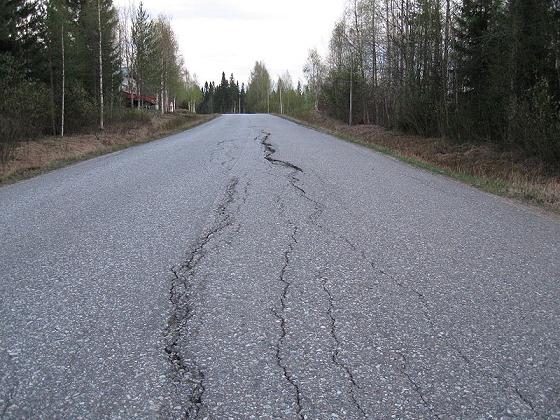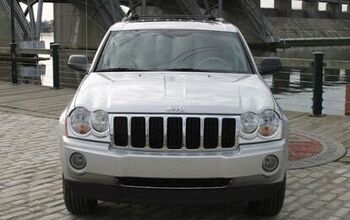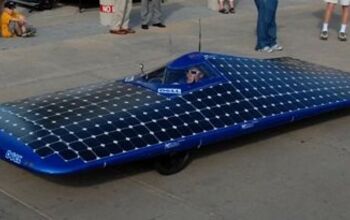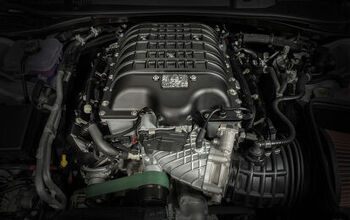A Road Runs Through It
Photo courtesy of Wikipedia
The road led out of town, crossed over a set of rusty, unused railroad tracks and spanned the Pilchuck river via a rickety, one lane, wooden bridge before beginning its climb into high hills above the town of Snohomish. For the most part, the road was long and straight, it’s only when you get up into the hills and forest proper that the landscape becomes rugged enough to force the roads to follow the lay of the land, and although I haven’t been on it in years, I can still see every inch of its length in my mind’s eye. Every dip and bend along its course, the veritable spider web of cracks that decorate its surface, and the broken bits along the edge that claw at the tires and attempt to wrest control away from drivers who are unwary enough to allow their vehicle to stray too far from the center line, are as familiar to me as the faces of old friends and I have carried them, quite literally, around the world and back again.
As I crossed the bridge and began my ascent into the hills on that hot August afternoon so long ago, my relationship with the road was still in its infancy. At fifteen years of age, the lessons the road had to teach about driving were still more than a year away and, instead of being ensconced in air-conditioned comfort behind the wheel of a car, I was out in the heat of the day mounted atop my trusty old Schwinn. It was an ugly, battered bicycle, something my father had found at the curb or fished from some farmer’s junk pile, and it had taken some creative repairs to make it road worthy. Now, it worked well enough that it had become my regular mount for the long trip into and out of town but, like all Schwinns, it was stoutly constructed and weighed almost as much as a horse.
The bike’s weight, though, was no problem as long as you were headed into town, but once you made the turn-around and started back up the hill, you felt every ounce and as the bridge fell away behind I shifted into the lower gears as my real assault on the slope out of the valley began. It was slow going, each turn of the bicycle’s crank sapping some tiny portion of my strength in exchange for a few feet of forward travel. But like all young men, I had a great reservoir of strength and although there were miles ahead, I was confident that I would not be completely tapped before the trip was completed. I had been here before, dozens of times on the back of this very bicycle, and like any kid from the country who wants the excitement that even a small town can bring, I knew this was the payback for my day’s adventure.
Image courtesy of cyclespa.blogspot.com
One turn of the crank followed the next and I was making slow but steady progress when the rear tire gave a sudden snap. As the air that had been captured in the inner tube began to hiss its way back into the atmosphere, I felt the tire go soft and the bike begin to settle onto its rear rim. Knowing that my day’s ride was at an end, I gave the pedal one last kick and, when the bike would roll no further, swung my leg up and over the seat in a fluid, well practiced dismount and stepped off of the pedal and onto the roadway. There wasn’t any point in looking at the tire, I knew, I had neither repair kit nor pump, so I simply started pushing.
I had walked about a mile and was just nearing the top of a small knoll when a Chevrolet pickup truck exploded over the crest of the hill. It was an older truck, but in nice condition, and I would have paid it little attention but for the fact that the driver was someone just about my own age. In fact, it was a someone who had been in my Freshman gym class a year earlier, a skinny, gangly outsider named Rick. He had been new to our school that year and, although he and I hadn’t become close friends, we hadn’t become enemies either. We were, at the very least then, friendly acquaintances and so I gave a slight wave as he sped past and then turned my attention back to the road and the long trip ahead.
I hadn’t very gone far when the truck pulled up behind me and its driver gave a friendly honk. We had a brief exchange, both of us shocked to see someone we sort of knew outside the confines of a high school classroom and after a few seconds Rick told me to put my bike in the back of the truck. It was a simple thing really, but not the kind of thing everyone will do for someone they barely know. It was a nice gesture and it formed the basis of a friendship that lasted through the remainder of our high school years and even into the first few years of adulthood.
But time took us in different directions and by the time I joined the Merchant Marines when I was in my early 20s, it was clear that our lives were already leading us in different directions. While I spent months at sea, life at home went on without me and gradually many of my oldest friends, Rick among them, slipped away. By the time I was closing in on 30 and decided to trade a life at sea for life as a college student, we seldom encountered one another and I heard through mutual friends that Rick was getting a good start on life and holding down a steady job somewhere in town. I suppose I could have tracked him down, but with college on my mind it didn’t make sense to try and pick up old friendships. Too much time had passed.
The road stretched out before me and I pushed my little Dodge hard as I made my way down out of the hills. Gravity pulled on the car as it sped down the long slope of a steep hill, but I paid no attention to the added speed and by the bottom of the hill was running well above the posted 35 MPH speed limit. Ahead, the road dipped as it crossed over a culvert pipe and then rose up and over a small hill where, I knew from prior experience, the car would shrug off a great deal of its excess speed. Still, I was kicking along well above the limit as I crested the hill and flashed past the place where so many years earlier Rick’s kindness had made us friends and I paid it scant attention.
At the bottom of the road, at the point where I could have turned and gone into Snohomish, I headed instead towards the highway on ramp that led to the City of Everett and wound the car out on the long, flat road that followed the river up the valley. The road was wide and fast and I thoroughly enjoyed the feeling of the fast little car as it sped along on the hot August afternoon. Racing along above the speed limit, it would have been easy to ignore the man I saw walking alone alongside the road but as I neared, the long, gangly form became strikingly familiar. Although it had been years since we had seen one another, as our eyes met for that one fraction of a second as I raced past, recognition flashed between us.
The man gave a slight wave but I noted in my rearview mirror that he did not turn to watch me pass as I accelerated away. At the first opportunity, I turned around and went back for him and, sure enough, it was my old friend reduced to walking because his ratty old Dodge Charger had run out of gas. He seemed shocked that I would come back for him and I noted as I drove him home to retrieve his gas can that he was both the same person I once knew but also someone profoundly different. Later, I waited while he filled and then started his old Charger and, after a few friendly final words and platitudes about meeting again soon, we parted ways, him towards wherever it was that life was taking him and me in my own, new direction. Our friendship had lapsed, but in the end we were at least, once again, friendly acquaintances.
A year or two ago, more than a decade after I finally left the Pacific Northwest for good, I made the long trip home and, although our family homestead has long-since been sold and my mother has relocated to a smaller place in the valley, l found myself drawn to the deep forest and the high hills of my youth. The road, of course, still leads down into the valley and every dip and bend along its course remains much as I knew it. At base of the road, close to town, however, the one lane bridge has been replaced by a new cement structure so wide that it even has breakdown lanes and the old, abandoned railroad tracks have been pulled up in order to create a nature trail.
The veritable spider web of cracks that decorated the road’s surface and the broken bits along the edge that once clawed at the tires and attempted to wrest control away from drivers who were unwary enough to allow their vehicle to stray too far from the center line have been paved over and I noted that, although many of the houses remained, the names on the mailboxes were new. It was the same, yet profoundly different. Better, but somehow worse. Another old friend and I, reduced once again to a casual acquaintanceship. I guess that’s just how the world works.
Your author at 17
Thomas Kreutzer currently lives in Buffalo, New York with his wife and three children but has spent most of his adult life overseas. He has lived in Japan for 9 years, Jamaica for 2 and spent almost 5 years as a US Merchant Mariner serving primarily in the Pacific. A long time auto and motorcycle enthusiast he has pursued his hobbies whenever possible. He also enjoys writing and public speaking where, according to his wife, his favorite subject is himself.
More by Thomas Kreutzer
Latest Car Reviews
Read moreLatest Product Reviews
Read moreRecent Comments
- El scotto UH, more parking and a building that was designed for CAT 5 cable at the new place?
- Ajla Maybe drag radials? 🤔
- FreedMike Apparently this car, which doesn't comply to U.S. regs, is in Nogales, Mexico. What could possibly go wrong with this transaction?
- El scotto Under NAFTA II or the USMCA basically the US and Canada do all the designing, planning, and high tech work and high skilled work. Mexico does all the medium-skilled work.Your favorite vehicle that has an Assembled in Mexico label may actually cross the border several times. High tech stuff is installed in the US, medium tech stuff gets done in Mexico, then the vehicle goes back across the border for more high tech stuff the back to Mexico for some nuts n bolts stuff.All of the vehicle manufacturers pass parts and vehicles between factories and countries. It's thought out, it's planned, it's coordinated and they all do it.Northern Mexico consists of a few big towns controlled by a few families. Those families already have deals with Texan and American companies that can truck their products back and forth over the border. The Chinese are the last to show up at the party. They're getting the worst land, the worst factories, and the worst employees. All the good stuff and people have been taken care of in the above paragraph.Lastly, the Chinese will have to make their parts in Mexico or the US or Canada. If not, they have to pay tariffs. High tariffs. It's all for one and one for all under the USMCA.Now evil El Scotto is thinking of the fusion of Chinese and Mexican cuisine and some darn good beer.
- FreedMike I care SO deeply!




































Comments
Join the conversation
Great piece man I ran into an old buddy of mine recently who I hadn't seen in over 10 years and this story just reminds me of that. It really is a small world man. Well you've seen the world and I haven't so I guess I can't say that.
Thank you Thomas. Reminds me of so many friends and acquaintances who have swapped places over the years. The roads have all gotten shorter, but the curves, dips, bumps and sight lines are all still where I left them. You'll always get more comments by pissing us off, so thank you again for writing this instead.